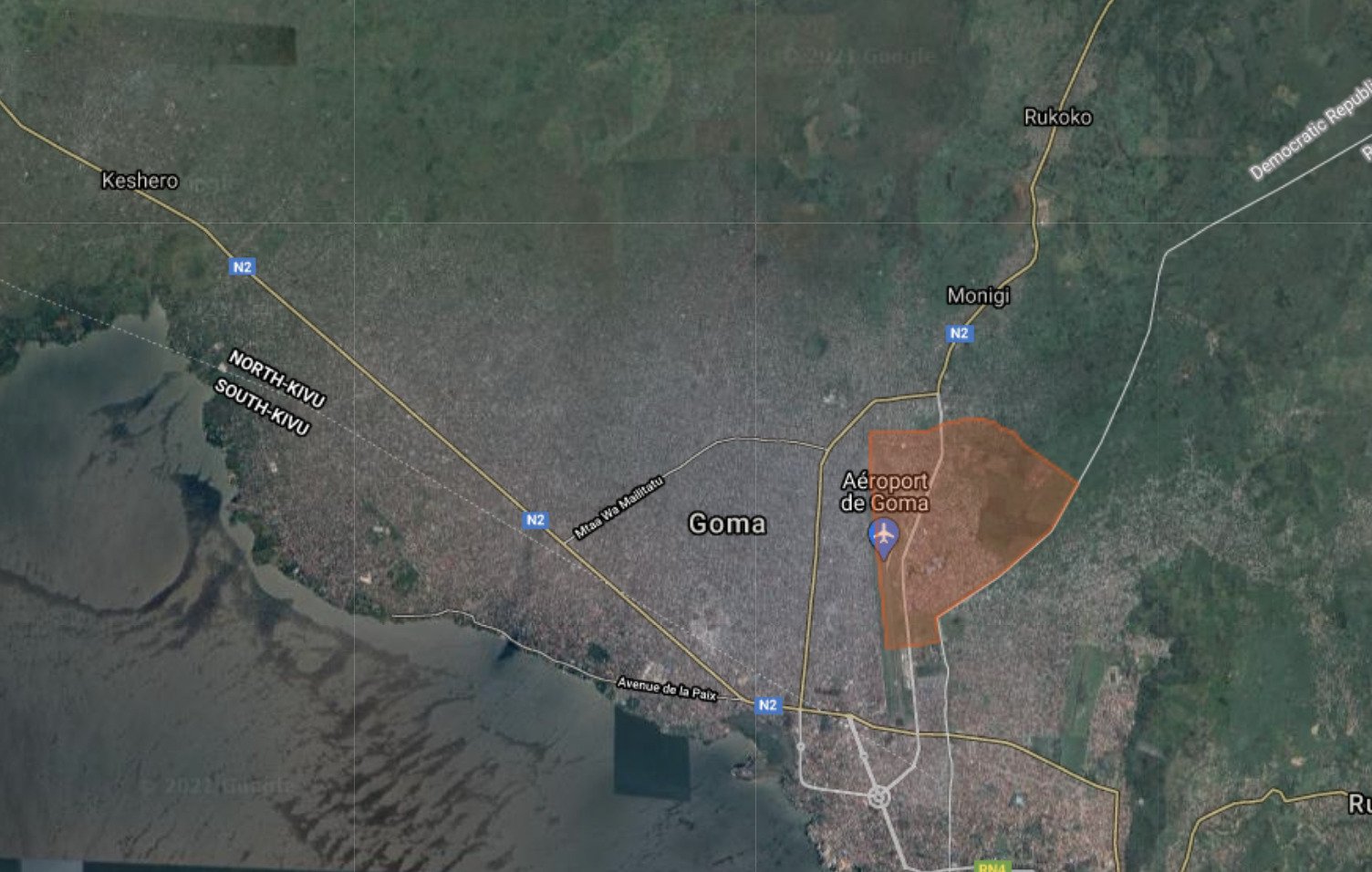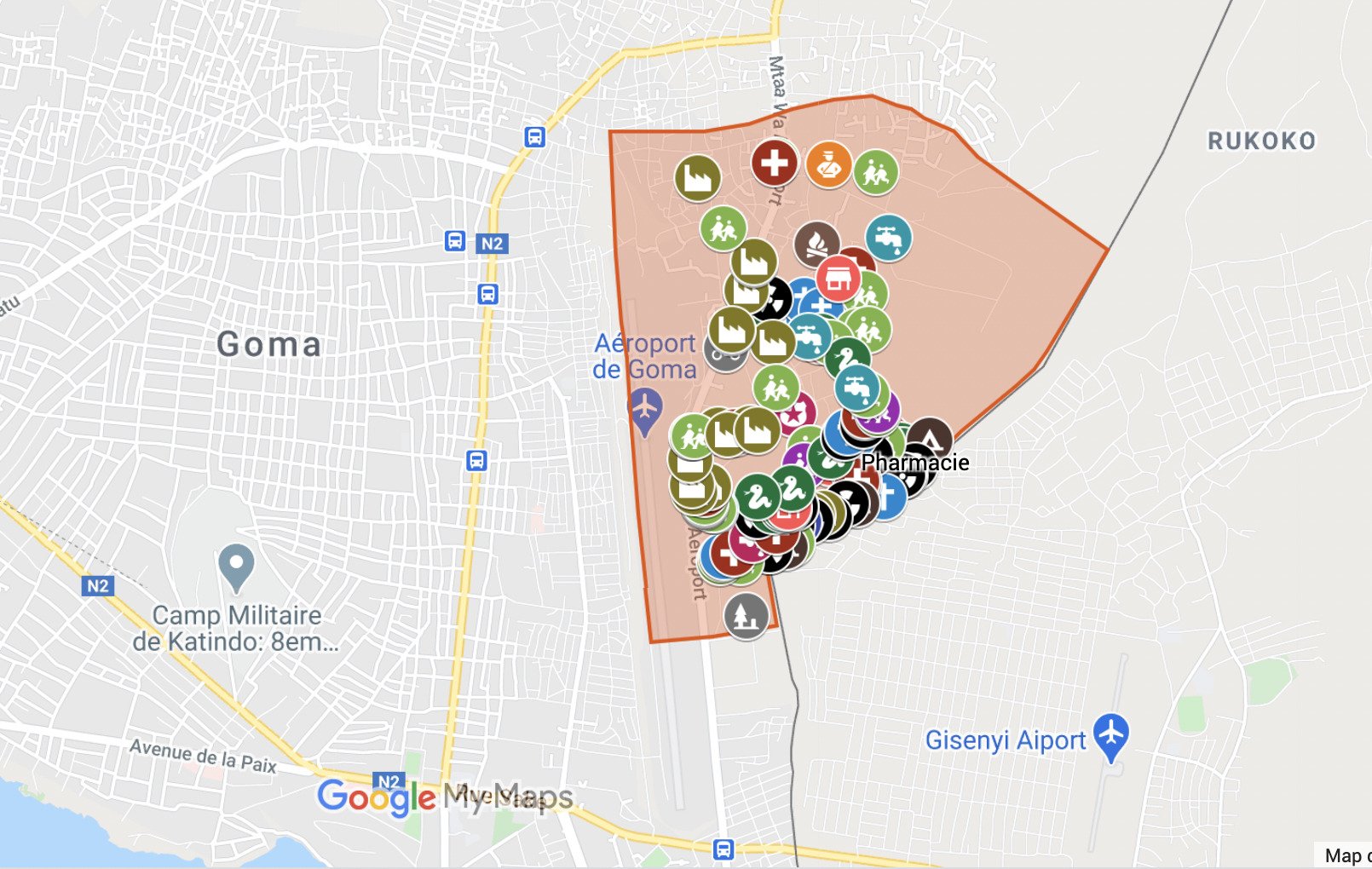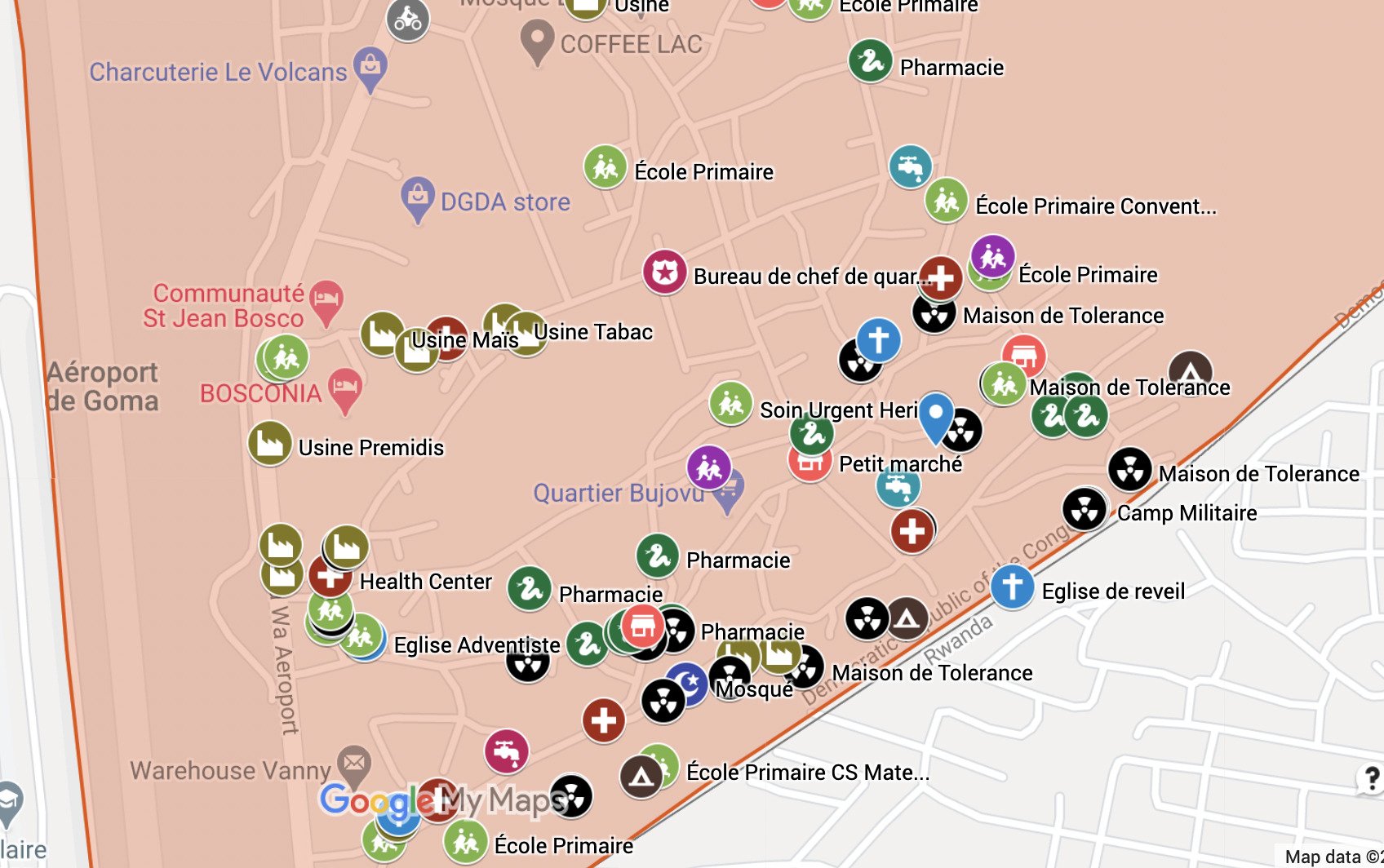Community Mapping of the Bujovu Neighborhood in Goma, DRC
Google map with perimeters of the Bujovu neighborhood, in Goma, DRC, population 48,000, 2020.
Core to changing existing gender discrimination and violence is understanding how it is perpetuated and developing strategies to address it. Unequal access to community resources and exposure to risks and threats plays a big role.
Over 120 resources and risks have been identified by us and our local partners in this mapping exercise in Bujovu, home to our future program Girl Awakening. This is the first community resource scan of its kind to be done in the DRC. In our next program steps we will utilize this map, working with our local partners and community stakeholders to identify ways to increase access for girls to resources and services that they are not getting equal access to, and to reduce girls’ exposure to the risks.
Among the resources identified are:
“This is the first community resource scan of its kind to be done in the DRC. In our next program steps we will utilize this map, working with our local partners and community stakeholders to identify ways to increase access for girls to resources and services that they are not getting equal access to, and to reduce girls’ exposure to the risks. ”
25 schools (just 2 of these offer secondary level education and the rest are primary which is an extremely low number for the total neighborhood population of 48,000).
9 health centers, though none are hospitals, so are only able to treat minor health issues.
An office of the community chef appointed by the local government who hold weekly meetings with leaders at the sub-neighborhood level.
7 factories: there are several big companies that have factories in the neighborhood producing things such as cement, coffee, cigarettes, and corn flour.
12 churches and 1 mosque
1 cultural center - not yet providing any programming to youth or specifically girls in the neighborhood.
Among risks identified are:
The most prevalent are brothels. 23 have been identified - meaning there are just as many (and likely more) brothels than primary schools in the neighborhood. Most (14) are located in a section of Bujovu called the Cellule Tyazo, where we will be recruiting girls from.
5 military camps, that while being responsable for security can be a threat to girls for transactional sex or other forms of extortion.
1 police station that similar to the military camps can be a threat to girls for transactional sex or other forms of extortion.
We’re looking forward to strategizing with community leaders, girls and staff on how to shift existing access to resources and services, reforming systems to increase equal access, and protect girls from risks and threats.
A special thanks to the Population Council’s technical support and our partner team members and community stakeholders who walked all over the neighborhood to locate the GPS points.
Google map with resources and risks is available in French and English






